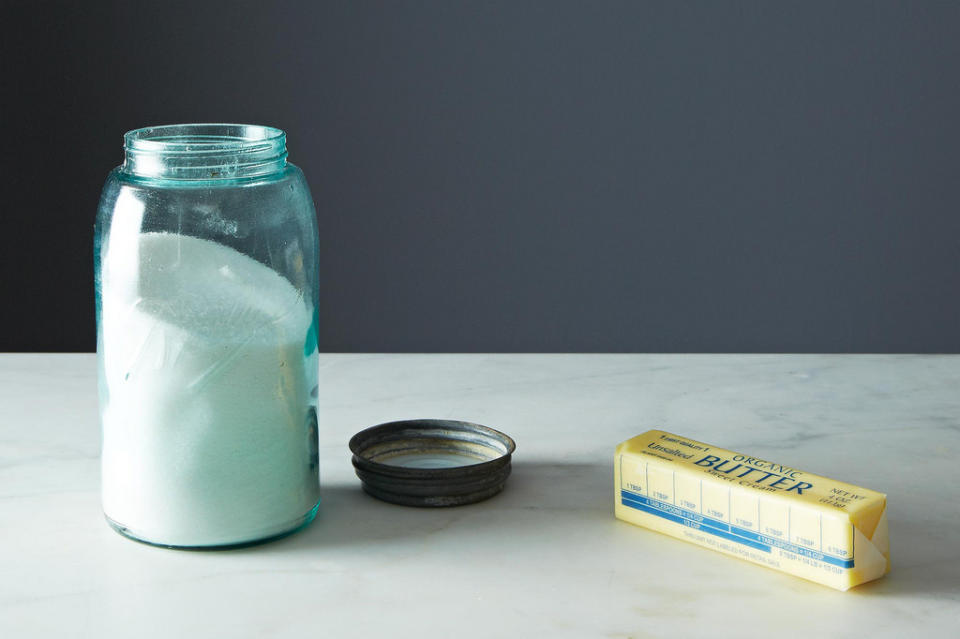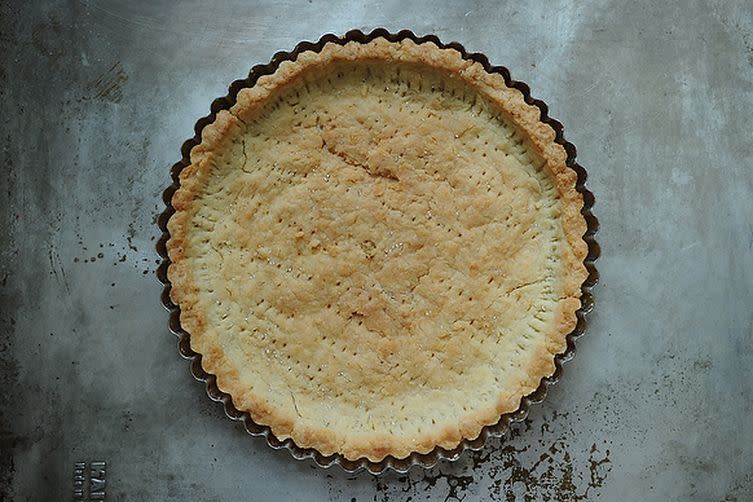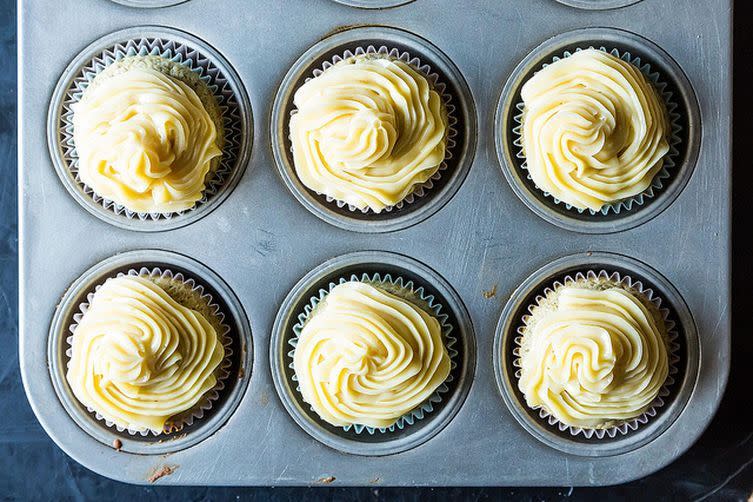Butter Buying Guide: Is More Expensive Always Worth It?
When is expensive butter worth the price, and when can you trim the fat?

Sugar and butter. (Photo: James Ransom)
I expect to pay high prices at the grocery store for pine nuts, imported tomatoes, and almonds, but butter always makes me do a double-take. It’s not like Parmesan (which I might be able to skip over for breadcrumbs — who knew!)—there’s just no good, cheap substitute when I’m testing a cake.
Related: The Best Way to Soften Butter, Fast
Sometimes I suck it up and pay over $6 per pound — the most expensive item on my receipt — but I usually hightail it over to Trader Joe’s, where it’s $3.99. (Editor Lindsay-Jean does the same.)
Related: How to Cream Butter and Sugar Without a Mixer
Curious to see what I was missing, I headed to Fairway Market, a grocery store chain in NYC, to check out the incredibly large butter selection. Here’s how the butter stacked up, most to least expensive per pound:
Président: $11.41
Lurpak: $9.38
Lescure: $9.05
Fond O'Foods: $7.78
Finlandia: $7.52
Breakstone’s: $6.99
Kerrygold: $6.98
Plugrá: $6.98 (or $4.59 in one big block)
Just FreshDirect: $5.79
Land O'Lakes: $5.69
Cabot: $5.49
Hotel Bar: $3.99
White Rose: $3.69

All the butter you could ask for. (Photo: Sarah Jampel)
By law, all butter in the U.S. is made up of at least 80 percent butterfat. Some high-end, high-price European style butters can have up to 87 percent butterfat.(According to a study by SFGate in 2000, for example, Président, mentioned above, is 82.57 percent butterfat; Plugra is 82.35 percent), but bottom line: All are 80 percent are above. So if all products meet the minimum requirement, why spend an additional $3 for a couple percentage points of butterfat?
Related: What’s the Best Way to Soften Frozen Butter?
At The City Bakery in New York City, they use two different types of butter depending on the food: Croissants, danish, and other viennoiseries are made with 83 percent butterfat butter, whereas muffins, scones, and most cookies are made with butter with a slightly lower fat percentage. But what about for home bakers?

Almond butter, dark chocolate & coconut cookies. (Photo: James Ransom)
According to chef and City Bakery C.E.O. Maury Rubin, it’s worth it to for all bakers (not just professionals) to use higher butterfat butter — as long as you’re not baking in mass quantity for the neighborhood. High butterfat butter generally has a more pronounced flavor, plus a lower moisture content; using butter that’s 17 percent water — as opposed to 13 percent — will give you unpredictable textural results.
Related: Do You Really Need to Refrigerate Butter? (& 9 Other Debated Foods)
It’s especially important in baked goods like croissants and pie crusts, where the butter determines texture and taste. (David Lebovitz claims, for example, that using European-style butter in this Brown Butter Tart Crust makes it less likely to crack.)
Related: How to Brown Butter

Paule Caillat’s brown butter tart crust. (Photo: Food52)
But should you rush out to buy the highest butterfat butter for your next batch of scones? Not so fast. Rubin points out that just as it might be silly to buy an $8 chocolate bar and melt it into cookies, it’s not in your best interest to use Gucci butter where it’s not going to shine — don’t waste your star Q.B. in an early-season scrimmage.
Related: 5 Ways to Flavor Your Butter with Fresh Herbs
And not everyone — not even the bakers I trust most — use even fancy-ish butter all the time.
Erin McDowell, pie expert extraordinaire, keeps the common brands of unsalted butter on hand: “I go through SO MUCH BUTTER and it’s really expensive. In Ireland, butter (good butter, at that) was so inexpensive we couldn’t believe it and I practically made a galette everyday. It’s 90 percent of why we want to expat ourselves and live in Ireland forever.”
Merrill Stubbs uses Plugrá on corn and toast, but bakes with unsalted Organic Valley. For a special baked good or a dinner party, she’ll use cultured butter for more depth of flavor.
Amanda Hesser? She uses salted Land O'Lakes (only 80.93% butterfat) and “Plugrá when I want to splurge. My allegiance to L.O.L. is a bit like my devotion to Crest toothpaste — I don’t know why, exactly, but I grew up with it and I trust it. It’s never let me down.”
And while butter with a low-butterfat, high-moisture ratio might create unpredictable baked goods, using fancy butter where it’s not intended can have similarly disappointing results.
Alice Medrich warns against the perils of putting fancy butter where it does not belong: “I use regular butter from the grocery store for most baked things (as that is what readers will use). If you use French or Irish butter you may need to alter recipes, since recipes are normally NOT tested with low moisture or fancy butter.” In Sinfully Easy Delicious Desserts, she points out that baking with high-fat, low-moisture European-style butter “may adversely affect your results: for example, cookies may spread too much on a baking sheet and seem greasy.” She recommends saving the special butter for your morning toast.

Chamomile lemon cupcakes with honey buttercream frosting. (Photo: James Ransom)
But what should I do with the really cheap stuff I’ve been stockpiling in the freezer?
Make cupcakes, says Rubin. In desserts where sugar (and frosting) dominate, butter becomes less important. For this cake fan, that’s as satisfying an answer as I need.
By Sarah Jampel.

